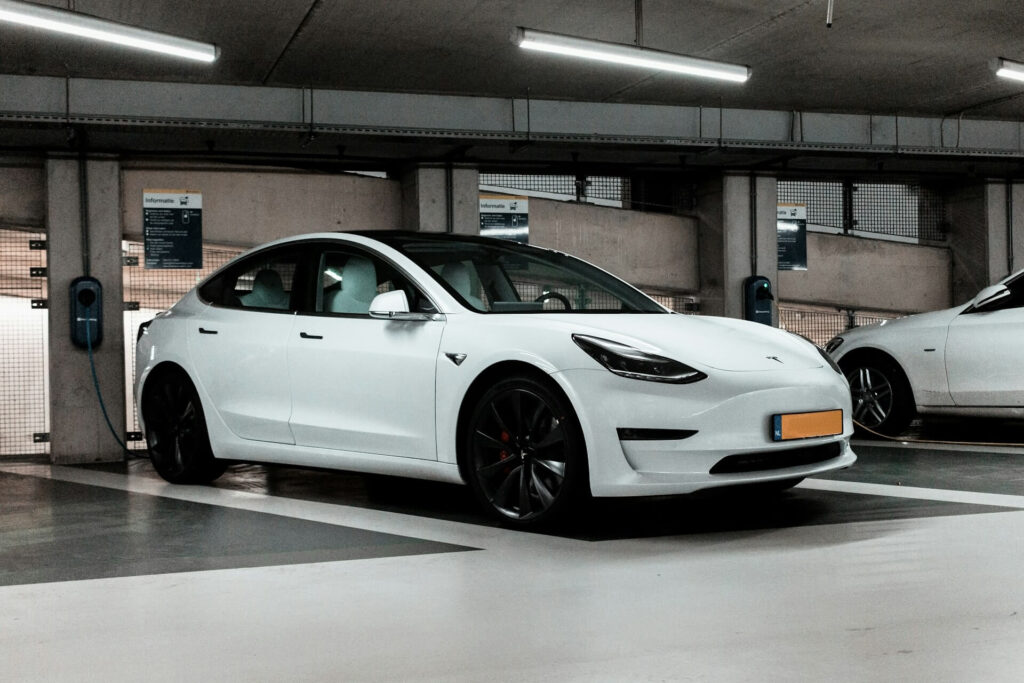Automakers Fake Engine Noises to Dupe Drivers
Feb 06, 2024

As an Amazon Associate, Modded gets commissions for purchases made through links in this post.
What sounds better than cranking the engine and hearing the pistons fire off? This sound is practically music for car enthusiasts everywhere, as some guys alter their exhaust pipes and mufflers to make their machines even louder.
But what if you found out those noises are sometimes fake? Innovative technology has let automakers produce quieter cars and create artificial sounds to fool drivers.
Here’s what you need to know about phony engine noises.
Why Are Automakers Faking Engine Noises?
Automakers know many customers like loud engines and have kept this in mind as they build more electric vehicles (EVs). The typical EV is much quieter than an average gas-powered car, so auto manufacturers have started simulating sounds in electric machines. Otherwise, the only sounds you’ll hear from the vehicle originate in the tires.
The quietness can be pleasant for some, but automakers have inserted simulated noise for their new EVs. Auto manufacturers hope to get more consumers on board with EVs by making them more similar to gas-powered cars.
EVs are increasing in popularity but have a long way to go before they take over the market. These electric machines accounted for 14% of global vehicle sales in 2022 — a rise of 10 percentage points compared to 2020.
Electric cars are popular because they produce no tailpipe emissions, but they’ve struggled to get through to consumers because of price, battery range and other concerns. What’s the solution? One way to ease the transition is to make EVs and gas-powered cars less distinguishable by their sounds.
Another reason for simulated engine noises is federal law. A few years ago, the National Highway Traffic Safety Administration (NHTSA) instituted minimum sound requirements for hybrid and fully electric cars. The average EV makes little noise when rolling down the street, so the federal government mandated these machines produce a minimum amount of sound — even if it’s artificial.

How Can You Fake Engine Noises?
Cars with fake engine sounds don’t have a soundboard or a toy underneath the hood. Modern auto industry leaders have developed exciting ways to simulate the sounds of a gas-powered engine.
For example, look at the Ioniq 5, Hyundai’s flagship EV. The vehicle’s motor is nearly silent, but the Korean automaker installs internal and external speakers to amplify the sound. Hyundai even simulates shifting despite your machine only having one gear.
Today’s automakers have become quite creative with their simulated engine sounds. While some do it to emulate a loud motor, other manufacturers do it out of necessity.
What Auto Manufacturers Have Faked Their Roaring Engines?
Hyundai is just one automaker faking engine sounds in its cars. Here are five manufacturers bringing the loud and proud roar to their modern vehicles.
1. Dodge
Dominic Toretto is famous for his Dodge Charger, but could you imagine if his car suddenly turned quiet? “The Fast and the Furious: would be a less-riveting movie franchise.
Dodge is converting the Charger into an EV with a projected 500-mile range when it debuts. When it hits the streets, this popular machine will have a decorative exhaust pipe to emulate a V-8 engine. Why would Dodge need a tailpipe for a car with no emissions? The automaker imagines its customers won’t want the Charger to lose its attitude on the road.
2. Ford
The Ford Mustang has been one of the world’s most popular muscle cars since the late 1960s. If you own a Mustang, you know how loud these machines can roar. However, this iconic vehicle has changed in the last decade with simulated engine sounds.
In 2014, Ford implemented an active noise control system for the 2015 Mustang EcoBoost. This mechanism uses the Mustang’s speakers to increase how loud the engine’s sound is.
The EcoBoost has also affected the famous Ford F-Series. Since model year 2015, the Ford F-150 EcoBoost has implemented fake engine noises to make the trucks sound louder inside the cab. Trucks can be gas guzzlers, so this technology has been a welcome sight for larger and louder vehicles.

3. Volkswagen
American brands aren’t the only ones using artificial sounds. Volkswagen has implemented a soundaktor (German for sound actuator) system in the Golf GTI and Beetle Turbo to amplify the engine and exhaust because they make minimal noise.
The German automaker inserts a speaker on the firewall, making the vehicle louder to mimic old Volkswagens. You can also see soundaktors in Audi and other Volkswagen brands.
4. Porsche
Sports cars are famous for being loud and proud as they zoom through the streets. Would you believe luxury manufacturers have implemented artificial noise systems?
Porsche, a subsidiary of Volkswagen, uses a sound symposer to make the engine sound louder in the cabin. The German luxury automaker says its goal is to enhance acoustics inside the vehicle while reducing noise pollution on the outside.

5. Acura
Acura is among the most popular luxury car brands due to its high customer satisfaction. Consumer Reports ranks it in the top five for reliability, but even this Japanese automaker uses fake engine sounds.
Like the Ford, Acura uses an active noise control system to emulate engine sounds coming through the cabin. The recordings contain actual footage of Acura vehicles to enhance the experience without contributing to noise pollution.
Faking Noises for More Efficient Engines
For some guys, cranking an engine for the 10,000th time is just as good as the first. While older cars are loud and proud, newer machines have become much quieter. EVs are practically silent.
Simulated engine noises can improve the driving experience and make everyone a bit safer on the road.






